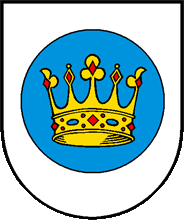Portrait
The village was merged as part of the Glarus commune reform on January 1, 2011 with the communities Filzbach, Mollis, Mühlehorn, Näfels, Niederurnen, Oberurnen and Obstalden to the new municipality Glarus Nord.
Bilten is located at the foot of the Planggenstock, south of the Linthkanal between Lake Walen and Lake Zurich. The municipality includes almost the entire northern slope of Planggenstock and Hirzli with the Alp Nidern, which is farmed in the summer. Bilten is directly connected to Reichenburg. The Bilten village creek borders the village parts Rufi and Unterbilten. Until 1887 he stepped over his banks several times and was therefore largely channeled. Between the Grabenstrasse and the railway line it flows into a catch basin, the so-called Kiessammler (grit collector). Then it flows leisurely in an artificial river bed in the Linthkanal. Bilten is, so to speak, a street village and consists of the parts Oberbilten, Rufi and Unterbilten. Northeast of the village center resp. on both sides of the railway line is the industrial zone. In the northwest, on the border with the canton of Schwyz, lies the scattered settlement Ussbühl (formerly Uspo). Northeast of the Ussbühl are a sewage treatment plant and the peat cutter pond. There peat was stung in the time of the Second World War, so that groundwater appeared.
The first written mention of the village as Billitun can be found in the deed of Count Arnold of Lenzburg to the monastery Schänis from the period around the middle of the 11th century. The place name probably goes back to a composition with the Celtic basic word "dūnon" which means fortified settlement. And the first part could be the Celtic word "bil-" which means swamp.
The area was most probably already inhabited in Roman times. From the middle of the 11th century, parts of Bilten belonged to the manorial estate of the monastery of Schänis, where Bilten was also church-dominated from the 12th century. A papal document from 1178 confirmed the possessions of Schänis in Bilten. The St. Katharina Chapel below the village is attested in 1345. Until the admission to Glarus, 1405/06 or 1415, Bilten belonged to the Gaster county. The ground rent to the Schänis monastery replaced the village inhabitants in 1412. In 1528, the majority of the inhabitants converted to the Reformed faith and belonged subsequently to the parish of Niederurnen. 1607, the church in Bilten was consecrated and in 1612 Bilten was completely detached from Schänis.
¨
The landmarks of Bilten are:
-
the Milt Knight House, dated to 1638, 1724 extended by one floor, in which the eponymous knights' hall is located. In 1977, Ulla Engeberg Killias moved there and was commissioned with the restoration of this protected building.
-
the Elsener House. It was built in 1608 and its gable room furnished in 1618 by Heinrich Elsener, called Milt, in the Renaissance style. From 1853-1944 there was a boys' education institution housed
These houses are next to each other on the Elsener street, the oldest main street in the canton of Glarus. Both houses are still inhabited by the owners or tenants.
Until the 19th century, it was unthinkable to see Bilten as a business location of today's scale. The production facilities were heavily dependent on hydropower and the Linth, which repeatedly branched out into new arms, could not provide this power. also the increasing dimming of the Linth plain, especially in the second half of the eighteenth century, promoted diseases which were not eliminated until the Linth correction of 1807-23.
Since 1875, Bilten is affected by the main railway axis Zurich-Chur and since 1974 by the A3 highway. In addition to the main roads to Niederurnen and Reichenburg, there is also a direct road connection to the Schänis. This results in an excellent traffic situation, which makes the village an important industrial location. The most important employer since the 1950s was Gebr. Kunz Fleisch- und Wurstproduktions AG (meat and sausage production), which went bankrupt in 1995. One subsidiary was Tiefkühlhaus AG (deep-freeze rooms), for which there is a successor company. The former factory building belongs to Hof Oberkirch AG in Kaltbrunn. Probably the most important tenant is the Koku, a company that deals in bankruptcy goods. The closure of Gebr. Kunz AG caused great consternation, and in 2002 huge tax losses were recorded. A municipal economic commission was set up to locate new businesses in Bilten. However, this body could not make up for the financial losses.
Many citizens from Bilten emigrated to America in the 19th century. One of them was Heinrich Rosenberger who emigrated to Galveston, Texas as a nineteen-year-old and found work in the textile business of the son of his Glarus patron Hessly. Soon he was able to acquire a stake, then the full ownership of the company Hessly. Investing in various industries and various public activities has led to an unstoppable rise to become the richest Texan of his time.
Early on, the farmer's son Heinrich Lienhard from Bilten grabbed the wanderlust. After the death of his mother, he emigrated as a 21 years old to Illinois, three years later (1846) he travels with friends on the California Trail westward to the Mexican province of California on the Pacific Ocean. He worked as a volunteer in the war against Mexico and then worked three years for John A. Sutter in the Sacramento Valley. Heinrich Lienhard's unique memories were published in the book "Wenn Du absolut nach Amerika willst, so gehe in Gottesnamen!" (English: New Worlds to Seek).
About the settlement of New Bilten in Wisconsin see the respective article.

The Church of Bilten
(built 1607)

Interior of the Church of Bilten with the organ pipe
Family Names from Bilten
Aebli
Arzethauser
Baumgartner
Becker
Blum
Dietrich
Elmer
Leu
Lienhard
Luchsinger
Marti
Milt / Elsiner
Oswald
Rosenberger
Salmen
Speich
Staub
Stüssi
Weber
Zweifel
Zwicki
